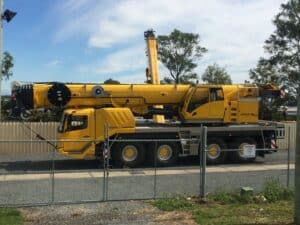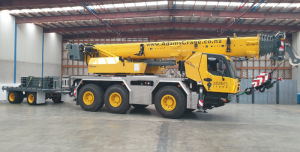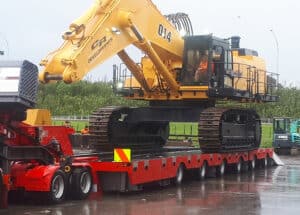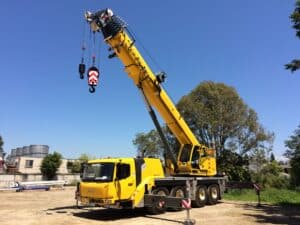How To Choose The Right Crawler Crane For Australian Conditions
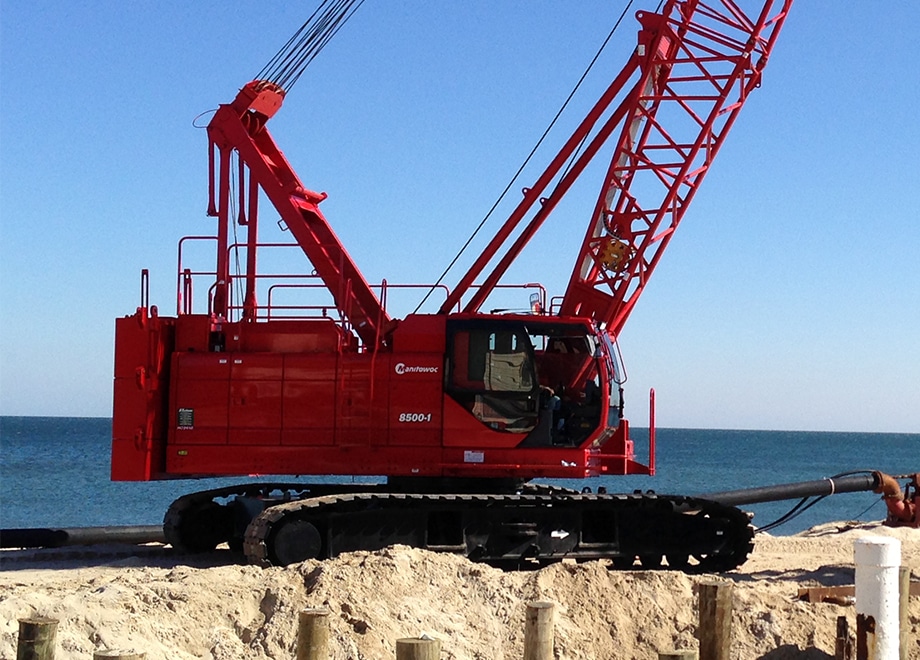
Crawler cranes play a pivotal role in many of Australia’s heavy industries, from large-scale mining operations in Western Australia to urban infrastructure projects on the east coast. Selecting the right crawler crane for these diverse environments involves more than just matching capacity and price.
Australian conditions pose unique challenges that require a strategic and informed approach. This guide will examine the key factors to consider when selecting a crawler crane specifically designed for Australia’s diverse climates, terrains, and industry standards.
Understanding the Australian Work Environment
Climate variations and their impact on crane performance
Australia’s vast geography brings with it a wide array of climatic conditions. From the intense heat of the Northern Territory and Western Australian mines to the cold, wet winters of Tasmania and Victoria, each region demands specialised equipment resilience.
Crawler cranes operating in high-heat environments require cooling systems to prevent engine overheating. Conversely, cranes used in colder regions must offer hydraulic systems that can withstand freezing temperatures without compromising performance.
Additionally, humidity in coastal areas may accelerate corrosion, necessitating enhanced protective coatings and rust-resistant materials.
Terrain types: coastal, desert, urban, and remote work sites
The terrain also plays a significant role in crane selection. In coastal areas, soft or sandy ground requires crawler cranes with wide tracks to distribute weight more evenly and avoid sinking. In desert or outback environments, machines must be highly durable to cope with dust and minimal infrastructure.
Urban settings, on the other hand, demand compact models with excellent manoeuvrability and lower noise outputs. Each terrain poses its own set of constraints and risks, so understanding the ground conditions where the crane will operate is crucial to making a suitable choice.
Industry-specific demands across Australian sectors
Different industries in Australia have unique expectations from crawler cranes. In mining, cranes are often needed for long-term deployment and heavy lifting, requiring robust build quality and high-capacity loads. In construction and infrastructure, the emphasis might be on mobility, flexibility, and efficient setup times.
Understanding the scope and scale of your project will help determine the required specifications, including boom length, lifting capability, and auxiliary features like quick rigging systems or GPS load monitoring.
Key Features to Look For in a Crawler Crane
Lifting capacity and operational range
One of the first specifications to consider is the crane’s lifting capacity. This must align with the heaviest loads anticipated on site while allowing a margin for safety and variability.
Operational range, which includes boom length and reach, is equally important, especially for projects involving tall structures or the need to move materials across wide distances. A miscalculation here can lead to workflow inefficiencies or, worse, unsafe lifting conditions.
Track design and ground pressure distribution
Crawler cranes derive their stability from their track system, which must be compatible with the ground conditions of the worksite. Cranes with wider tracks can spread their weight over a greater surface area, making them ideal for soft or uneven terrain.
Some models also offer retractable or extendable undercarriages to adapt to different operating environments. Proper ground pressure distribution is essential not only for stability but also to prevent damage to sensitive job sites such as city pavements or protected environmental areas.
Engine power and fuel efficiency in harsh environments
Australia’s remote job sites often require machines that can operate independently for extended periods. A powerful engine is necessary for lifting heavy loads, but it should also offer fuel efficiency to reduce refuelling frequency and operational costs.
Look for Tier 4-compliant engines or models with hybrid capabilities to meet environmental standards and achieve long-term savings. Machines built for hot, dusty environments must include high-performance air filters and cooling systems.

Compliance with Australian Standards and Regulations
Safety certifications and operational compliance (AS standards)
Australia has some of the world’s most rigorous health and safety standards, particularly when it comes to heavy machinery. Crawler cranes must comply with Australian Standards (such as AS 2550.1 and AS 1418 series) that govern crane design, safe use, and maintenance.
These certifications ensure the equipment is fit for local working conditions and meets legal requirements. Always verify that your crane has passed inspection and certification processes relevant to its intended use.
Meeting site-specific requirements and government mandates
Some projects, especially those funded by government or conducted in environmentally sensitive areas, may impose additional operational criteria. For instance, noise limitations near residential areas or emissions restrictions near national parks can dictate which models are acceptable.
Buyers must liaise with project managers or site safety officers to confirm these additional parameters and avoid costly non-compliance issues later on.
Understanding crane load charts and documentation in Australia
Load charts are vital documents that outline a crane’s capabilities under various configurations. Australian regulations require these charts to be clear, detailed, and available on-site during operations.
Misinterpreting load charts can lead to dangerous overload situations or mechanical failures. Choose a manufacturer or dealer who provides comprehensive training and documentation tailored for the Australian workforce.
Evaluating New vs Used Crawler Cranes
Assessing the condition and service history of used cranes
Purchasing a used crawler crane can offer substantial cost savings, but it also requires a keen eye for detail. Always review the crane’s maintenance records, hours of operation, and past usage conditions.
Machines that have worked in extreme climates or high-intensity industries may have hidden wear. A thorough inspection by a certified crane mechanic can reveal signs of fatigue in structural elements, undercarriage wear, or hydraulic issues.
Cost-benefit analysis for new versus second-hand purchases
While new cranes come with the latest technology, manufacturer warranties, and longer service life, they also command higher upfront costs. On the other hand, used cranes offer lower capital outlay but may incur more frequent maintenance.
For long-term, high-volume use, a new model might be the smarter investment. For shorter projects or companies with tighter budgets, a well-maintained used crane can deliver solid value.
Warranty, support, and availability of spare parts
Always consider the availability of local service support and spare parts when buying either new or used. Cranes sourced from overseas may have limited parts availability in Australia, leading to long downtimes.
Choose suppliers that offer warranty coverage, access to local mechanics, and a reliable inventory of replacement parts to ensure uninterrupted operation.
Popular Crawler Crane Models Suited for Australian Conditions
Brands with strong performance in local industries
Brands like Liebherr, Kobelco, Hitachi-Sumitomo, and Manitowoc have established reputations in Australia for durability, ease of maintenance, and consistent performance. These manufacturers understand the Australian market and often have local dealer networks that provide essential after-sales support.
User reviews and field-tested reliability in Australia
Feedback from local contractors and equipment operators can offer valuable insights into real-world performance. Models that perform well in mining operations in the Pilbara, or on infrastructure projects in Sydney are often shared through word-of-mouth and industry forums. Prioritise cranes with a proven record of minimal downtime and high reliability in similar project environments.
Versatile models for mining, construction, and infrastructure
Some crawler cranes are built with modular designs, allowing operators to swap booms or counterweights depending on the project. Versatile models are ideal for companies working across multiple industries, offering flexibility and a better return on investment. Seek out machines with quick-setup features and remote diagnostics to streamline operations.
Where to Source Reliable Crawler Cranes in Australia
Trusted local dealers and equipment suppliers
Engaging with reputable Australian dealers ensures that your equipment is compliant, supported, and ready for local conditions. These suppliers often include setup assistance, operator training, and flexible financing arrangements. Look for those with longstanding reputations and partnerships with major manufacturers.
Online marketplaces and auction platforms
Websites like Machines4U, GraysOnline, and Pickles Auctions provide platforms for browsing a wide range of crawler cranes. While online listings can offer competitive prices, always inspect the equipment in person or request a third-party inspection to verify condition and authenticity.
Importance of after-sales service and support networks
Buying a crawler crane is only the first step—ensuring it remains operational is just as important. Choose vendors that provide strong after-sales service, including preventative maintenance, emergency repairs, and access to skilled technicians. This is especially vital in remote areas where downtime can severely impact project schedules.
Final Considerations for Making the Right Purchase
Aligning crane capabilities with project timelines
Before purchasing, review the duration and phases of your project. Some cranes are better suited to long-term static use, while others offer quick mobility and fast assembly. Choose a model that complements the pace and scale of your operations.
Budgeting for transport, maintenance, and long-term use
Beyond the initial cost, factor in transport logistics (especially to remote sites), ongoing maintenance, and potential upgrades. Transporting large crawler cranes across state lines or to regional sites can be costly and time-consuming if not planned properly.
Training and operator availability in regional areas
Lastly, ensure you have access to qualified crane operators, particularly in remote areas. Some high-tech models require specific training, and a lack of skilled personnel can create operational bottlenecks. Verify training support from the seller or consider investing in operator upskilling.
Learn more about the difference between All-Terrain vs Rough-Terrain Cranes here.
